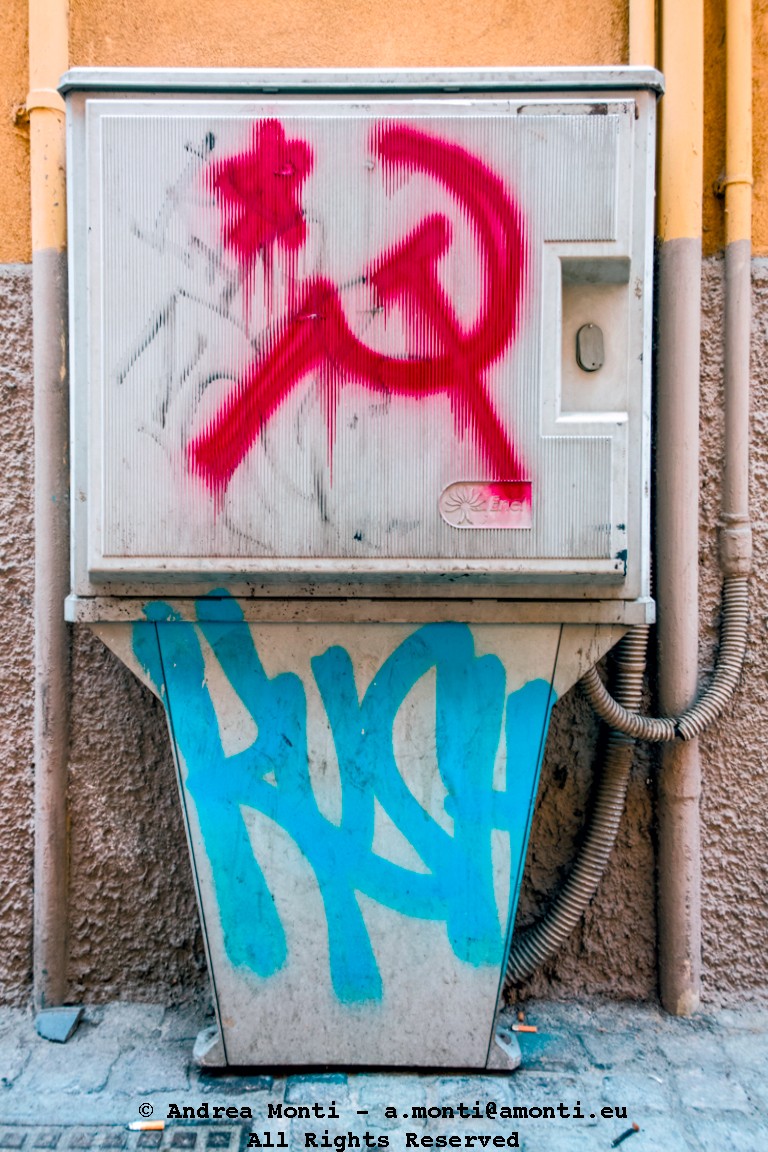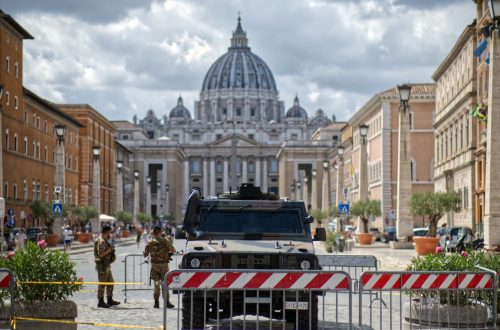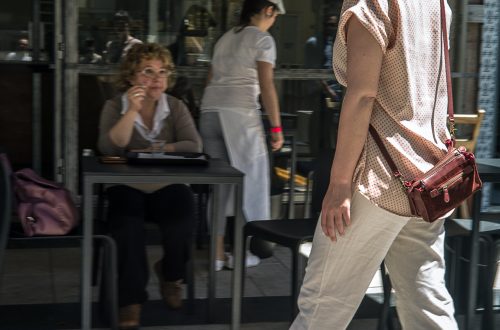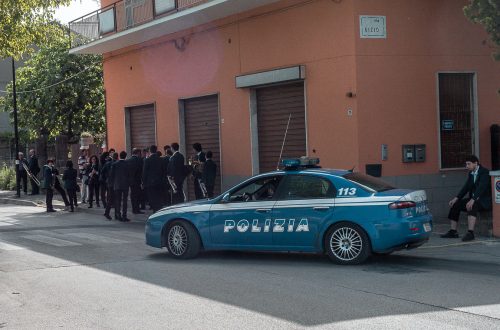
Hammer and Sickle
The image presents a straightforward urban fragment: an electrical cabinet bearing two layers of graffiti, one in red, one in blue. The red, unmistakably, forms the hammer and sickle symbol — sprayed quickly, with visible vertical striations from the cabinet’s ridged surface disrupting its edges. The blue tag below is broader, more gestural, perhaps made with a thicker nozzle and without concern for the political overtones of what sits above it.
Compositionally, the vertical framing suits the subject, containing the entire cabinet and the immediate environment. The flanking pipes and textured wall create a symmetrical boundary, keeping the viewer’s focus on the graffiti itself. The alignment is square and deliberate, lending the photograph a documentary neutrality rather than a romanticised street-art aesthetic.
Technically, the exposure balances the warm tones of the stucco wall and the cool intensity of the spray paint without either bleeding into the other. The detail in the cabinet’s plastic texture is retained despite the saturated colours — a result of precise white balance control and moderate contrast adjustment. Sharpness is consistent across the frame, allowing both the foreground textures and the subtle background wear to be equally legible.
It works best as a record: not glorifying, not condemning, simply placing an act of marking within its physical context. The pairing of colours, whether accidental or intentional, provides the visual tension that anchors the frame.




